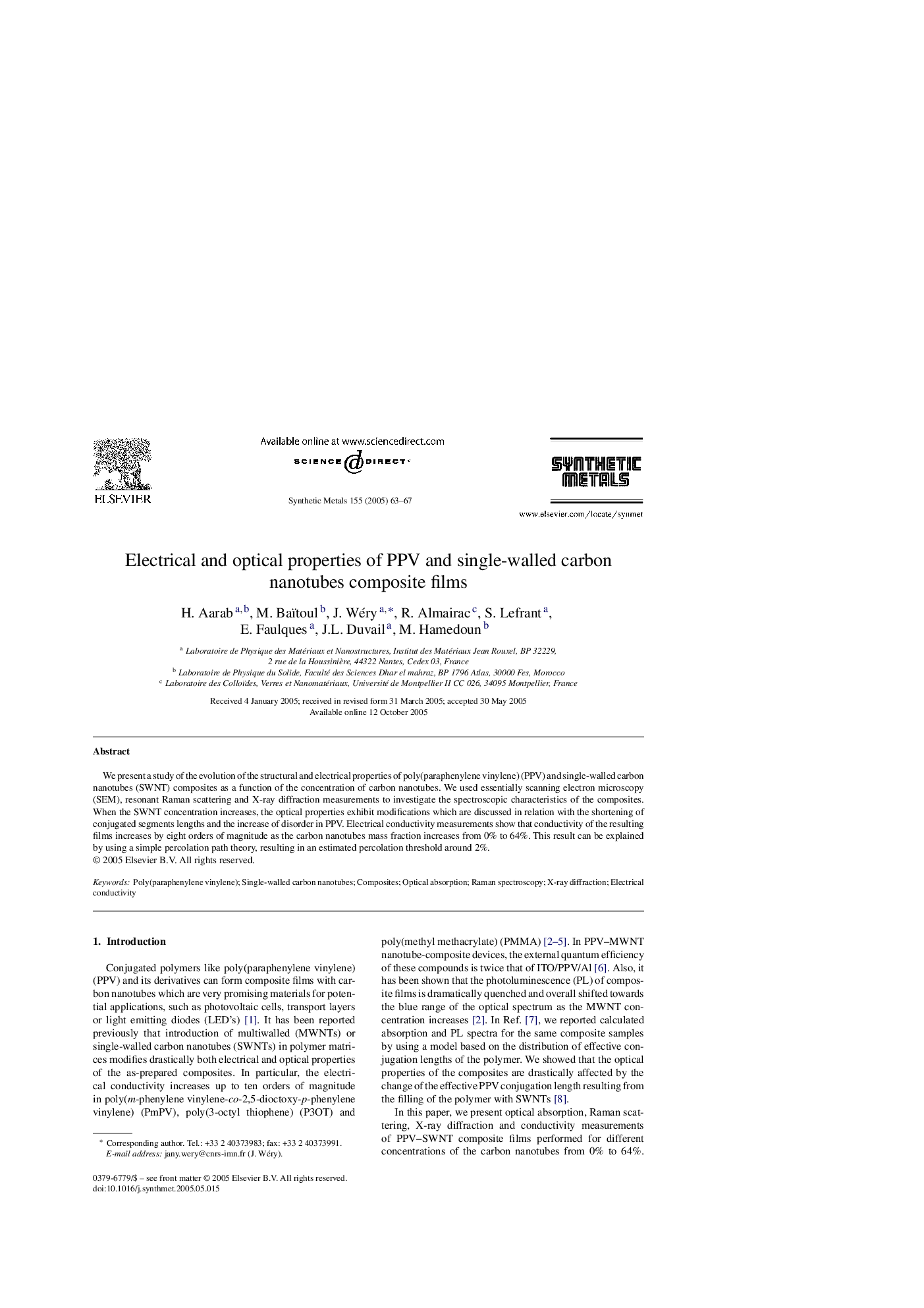| Article ID | Journal | Published Year | Pages | File Type |
|---|---|---|---|---|
| 10619106 | Synthetic Metals | 2005 | 5 Pages |
Abstract
We present a study of the evolution of the structural and electrical properties of poly(paraphenylene vinylene) (PPV) and single-walled carbon nanotubes (SWNT) composites as a function of the concentration of carbon nanotubes. We used essentially scanning electron microscopy (SEM), resonant Raman scattering and X-ray diffraction measurements to investigate the spectroscopic characteristics of the composites. When the SWNT concentration increases, the optical properties exhibit modifications which are discussed in relation with the shortening of conjugated segments lengths and the increase of disorder in PPV. Electrical conductivity measurements show that conductivity of the resulting films increases by eight orders of magnitude as the carbon nanotubes mass fraction increases from 0% to 64%. This result can be explained by using a simple percolation path theory, resulting in an estimated percolation threshold around 2%.
Keywords
Related Topics
Physical Sciences and Engineering
Materials Science
Biomaterials
Authors
H. Aarab, M. Baïtoul, J. Wéry, R. Almairac, S. Lefrant, E. Faulques, J.L. Duvail, M. Hamedoun,
